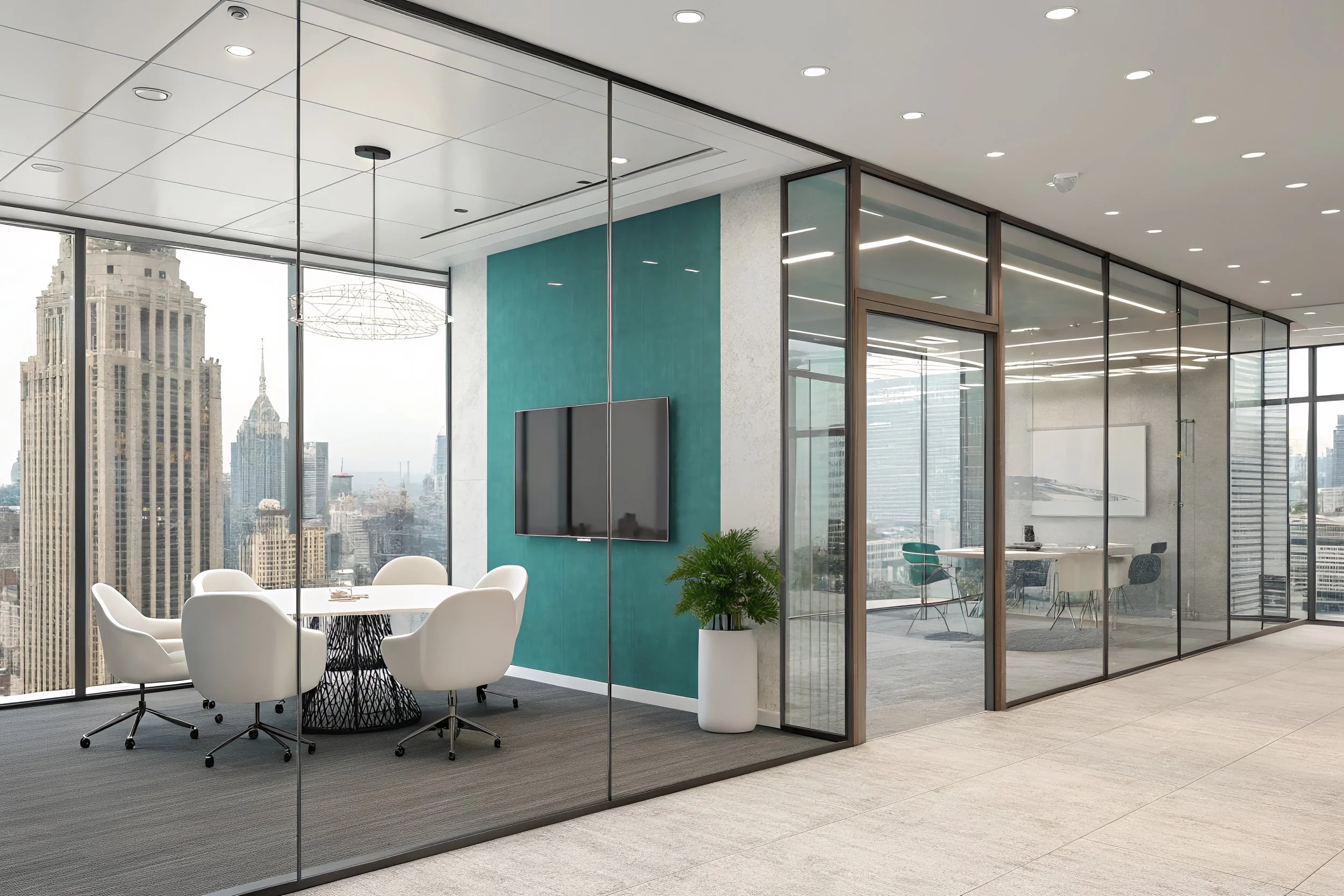The Future of the Cellular Office
Author: James Calder
A neglected component of the future workplace debate is the cellular office. Whilst activity-based working advocates dismiss them as outdated, cellular offices remain dominant in many existing fitouts and specialist workplaces, particularly in the legal sector where they continue to play a critical role in professional practice.
The legal profession has long embraced the cellular office model. Lawyers require confidential spaces for client consultations, sensitive document review, and privileged communications. The nature of legal work, involving complex case preparation, detailed contract analysis, and strategic planning, demands sustained concentration that open offices simply cannot provide. Partners, senior associates, and even many junior lawyers still prefer and are provided with enclosed offices as both a functional necessity and professional expectation.
Law firms worldwide have invested heavily in office buildings designed around cellular layouts. These spaces, often featuring timber-paneled corridors, formal meeting rooms, and corner offices with views, cannot be easily or economically adapted to open or activity-based environments. The traditional legal office reflects not just functional needs but also the profession's culture of hierarchy, client service standards, and the gravitas expected in legal practice. These investments represent designed solutions that deliver professional integrity.
My decades of research designing workplace environments for law firms across Australia, the UK, and Asia revealed that open, shared, and cellular models each have distinct strengths and weaknesses in legal contexts. Whilst some progressive firms have successfully implemented hybrid models with collaboration zones and flexible spaces, the core cellular office remains essential. Partners need private spaces for sensitive client calls, junior lawyers require quiet environments for complex research, and the entire firm benefits from the professional image that cellular offices convey to clients.
However, the legal sector's traditional approach to cellular offices faces unprecedented challenges in the post-pandemic era. Many law firms report office utilisation rates of just 40-60%, with partners and senior lawyers working from home two to three days per week. This creates lifeless corridors where it's difficult to know if colleagues are present, undermining the mentorship, collaboration, and cultural transmission that have traditionally defined legal practice. The challenge is particularly acute for junior lawyers who benefit from proximity to experienced practitioners but find themselves in empty offices surrounded by closed doors.
Real estate represents one of the largest overhead costs for law firms, often accounting for 8-12% of total revenue. Partners and practice managers increasingly question the efficiency of maintaining expensive CBD offices with low utilization rates, yet they recognize that the cellular office model remains essential for client service, confidentiality, and professional standards. The tension demands ingenious solutions that preserve professional integrity.
The legal profession's resistance to wholesale workplace transformation isn't merely conservative thinking, it reflects genuine functional requirements. Client confidentiality obligations under professional conduct rules make open offices problematic for many legal activities. Court appearances via video link require controlled environments. Document review involving sensitive commercial information demands secure, private spaces. These requirements cannot be easily accommodated in activity-based working models designed for other industries.
Recent research may have developed a solution that addresses these challenges while preserving the benefits of ownership, privacy, environmental control, and professional standing that cellular offices provide. New technologies connecting space use, security, storage, and booking systems enable a user-centric approach to enclosed offices that improves both utilisation and connection while maintaining the confidentiality and professional standards the legal sector requires. This approach, called the co-owned office, allows multiple professionals to share premium cellular spaces while maintaining individual ownership and control when needed.
For law firms, this model offers compelling advantages. A partner working from home three days per week could share their corner office with a senior associate or consultant, dramatically improving space utilisation while maintaining the professional environment clients expect. Advanced booking systems ensure availability for client meetings and sensitive work, while occupancy sensors help colleagues identify when peers are available for collaboration. Secure storage solutions allow personal belongings and confidential files to be maintained while enabling flexible use of the space.
The legal sector has historically been slower to adopt new workplace models, but significant cost pressures, changing work patterns, and generational expectations are creating momentum for change. Law firms that can successfully implement co-owned office models stand to achieve substantial improvements in space efficiency, overhead reduction, and employee satisfaction while maintaining the professional standards and confidentiality requirements that define legal practice.
Historically, new workplace models gain adoption in the legal sector when they deliver measurable improvements in profitability, client service, and talent retention. The co-owned office concept has serious potential to achieve all three while preserving the cellular office tradition that remains central to legal practice. Ingenuity in design meets integrity in delivery.


